We open a gentle door into an age-old practice. This short intro grounds big ideas in simple steps so we can approach travel of the subtle self with curiosity and care.
Many people describe this as an out-of-body experience where a subtle form seems to separate from the physical body and roam other layers of reality. Traditions speak of floating, passing through walls, and a reassuring silver cord that keeps return possible.
We’ll note common sensations—vibrations, a quick lift, or a soft sense of drifting—so you are prepared and calm. Timing often works best near sleep, when the mind stays awake while the body relaxes.
Think of this as a practice, not a test. We’ll blend ancient wisdom with modern tools and friendly tips, building confidence as we map why people feel their consciousness expands and what this journey might actually feel like.
Why People Seek Astral Travel Today
Many people are drawn to inner journeys now for relief and meaning. We see seekers who want less anxiety about mortality and more calm in daily life.
Some report that a clear intention and gentle practice bring real healing and emotional insight. Vivid imagery can act like a mirror, giving fresh psychological clarity.
Others chase a stronger sense of spirit and intuition. Communities share sound tools, like binaural beats, that support sleep-adjacent states and safer projection practice.
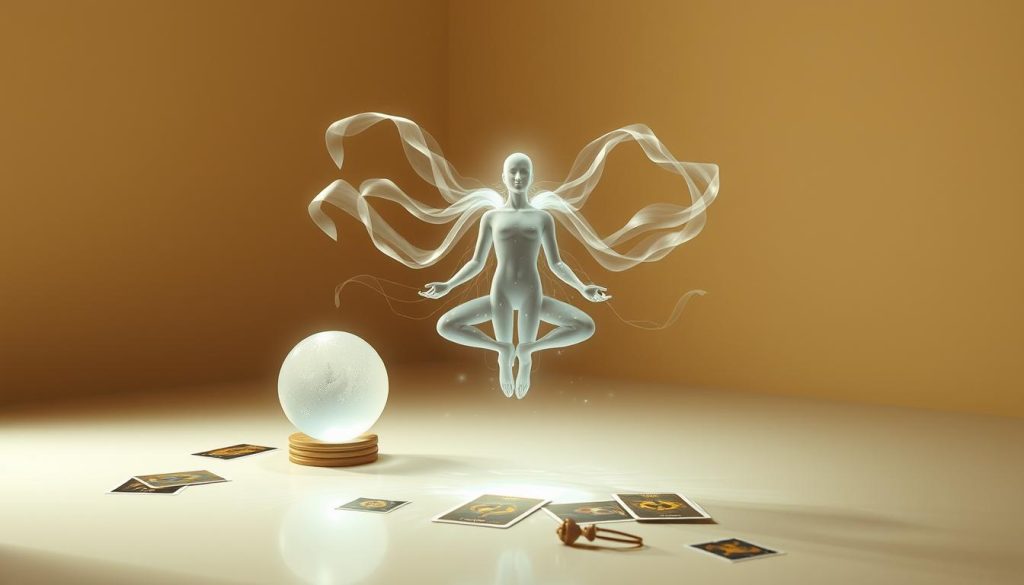
People often say the experience can feel like a soft reset. Some body sensations are vibrations, others are lightness. These varied body experiences help many reframe fear and value everyday moments more.
We invite honest curiosity. State your intention, move with care, and treat each session as learning. This gentle approach supports health, wonder, and gradual skill without pressure.
What Astral Projection Is and Isn’t
We frame this practice as a mindful separation: a subtle layer—often called an astral body—moves away from the resting physical body while awareness stays alert.
This is not random dream content. A true projection aims for steady awareness and a clear thread back to your physical form. People report a calm mind, steady breath, and a soft release from the body before movement begins.
Different cultures use varied language. Some name a soul or spirit. Others speak of layered lives and finer forms. We honor those differences and keep terms plain so your own experience leads.
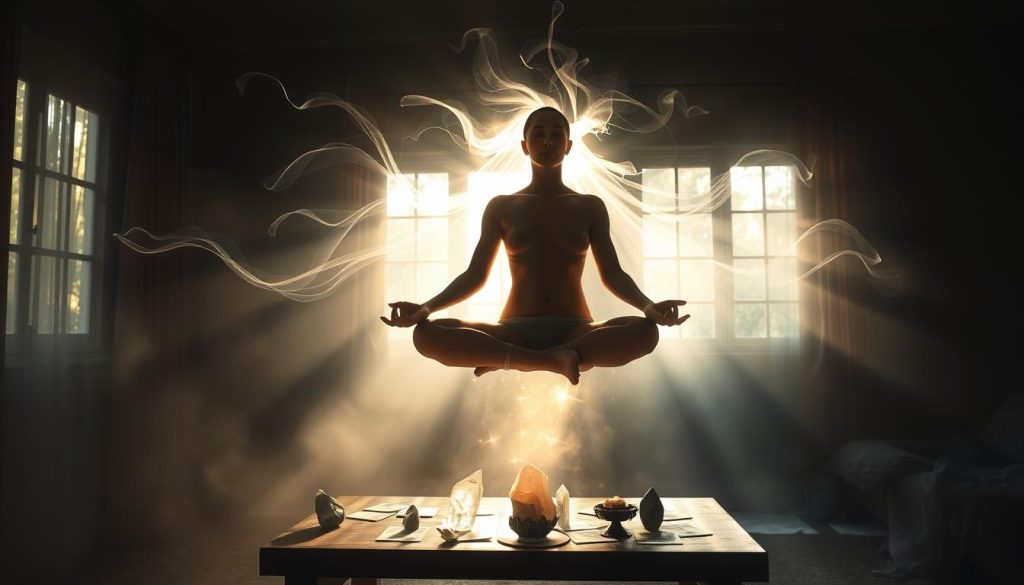
Why the distinction matters: a dream often drifts. A projection feels like a deliberate shift with a continuous, conscious link. That steady thread changes how you practice and what you record afterward.
Be kind with yourself. Test gently, jot short notes, and note repeated markers. Over time, those details form a flexible map that supports safe, honest exploration of these subtle bodies and the life they reveal.
Roots and Traditions: From Ancient Cultures to Modern Practice
Across centuries, cultures have told stories of spirit travel that move past ordinary sight. We trace a lineage from Egyptian ideas of the ba and ka, which pictured parts of the soul leaving and returning to the physical form.
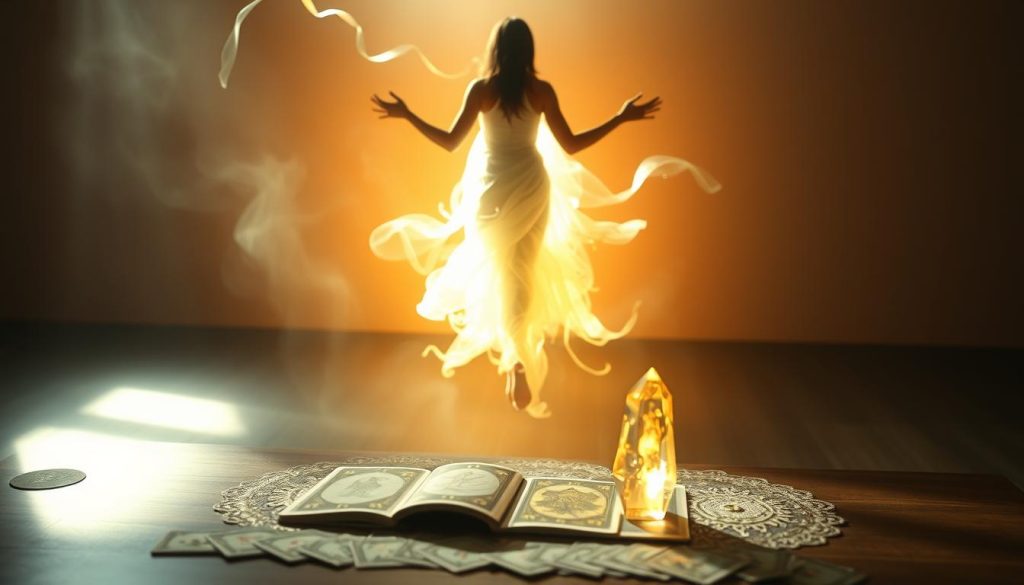
Hindu and yogic teachers, like Paramahansa Yogananda, offered maps of subtle planes and steady practice for inner life. Taoist texts and The Secret of the Golden Flower add another thread.
In the Americas and Arctic, Waiwai shamans and Inuit Angakkuq used journeying for community healing. These are not mere stories. They are working ways to guide, mend, and teach.
Theosophy in the 19th century helped translate older lines into modern language, fueling today’s interest in astral projection and related experiences. Forms and names shift across the world. Yet many accounts describe leaving the body and meeting subtle realms.
We honor that variety and invite you to see this as a living tradition. Old wisdom meets modern tools. Your own journey adds meaning while keeping practice grounded and respectful.
Science, Skepticism, and Consciousness Research
Researchers are mapping what the brain does when individuals report stepping into a vivid nonphysical state.
A University of Ottawa study found activity in the left supplementary motor area, supramarginal gyrus, posterior superior temporal gyrus, and the temporal-parietal junction during voluntary out-of-body imagery. These patterns suggest a distinct kinesthetic imagery state that labs can measure.

Many scientists frame these states as altered neural events related to dreaming or atypical activity. Practitioners, however, emphasize subjective value. We hold both views with care.
Evidence shows some body reports match across people. That consistency keeps curiosity alive in both research and practice. Projection may be many things at once: a mental skill, a psychological tool, and a pathway inside consciousness.
Be practical. Record your state, timing, and sensations after each session. Small notes help you refine methods and speak clearly with researchers or peers.
In short, science and spirit can be friendly neighbors. We stay open-minded and grounded as we learn from labs and lived experiences in this wide, shared world.
Lucid Dreaming vs Astral Projection: Key Differences that Matter
Some nights we wake inside a vivid dream, while other nights our awareness feels like it slips away from the sleeping body.
Core difference: lucid dreaming happens inside REM sleep, where the dreamer is aware and can often edit scenes. By contrast, many who practice astral projection report a conscious separation from the body and a steady thread back.
The timing helps tell them apart. Lucid dreams sit squarely in REM. Projection is usually pursued when the mind stays awake and the body falls deeply asleep.
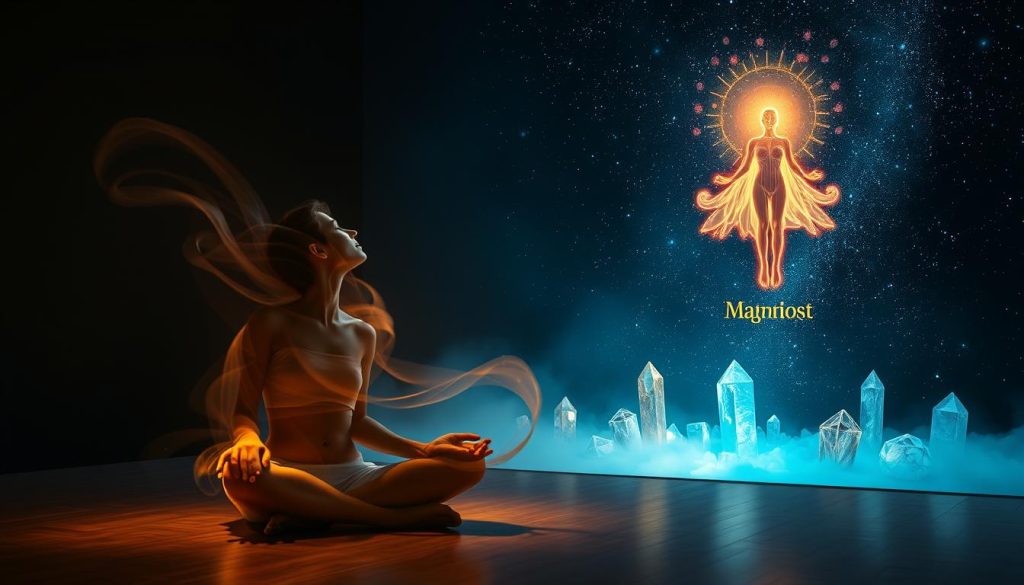
Control and signs: lucid dreamers change dream content. Projectors steer with intent and steadier awareness rather than scene editing. Full-body vibrations, crisp sensory detail, and clearer reading are common markers that a projection feel like a distinct event.
People sometimes blend both states. Simple tests can help: try reading text or noting stable details. If the text holds, you may be in a projection; if it melts, you might be in a dream.
Why try both? Dreams give creative, playful practice. Projection offers exploration beyond the body’s edge. Keep a short journal. Notice what repeats and what opens next.
Preparation for Safe, Effective Practice
We prepare a gentle setting so the mind can wander while the body stays safe and still.
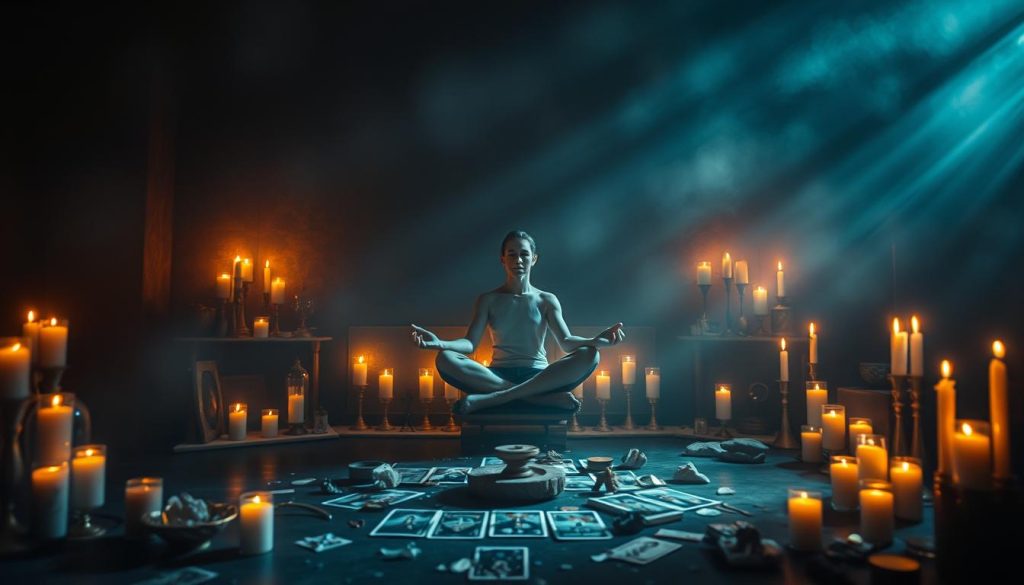
Set an intention—what we want to learn or heal. Let that aim steady the session.
Design the space: dim light, loose clothes, and no notifications. A comfy temperature and soft blanket help the physical body relax.
Use simple techniques: breath counting, progressive relaxation, and a soft internal gaze. These cut mental noise and tune the state we seek.
Work near sleep thresholds when the body settles and awareness can stay bright. Track timing across nights to find your window.
We welcome subtle sensations—a buzz, a wave, or light drift. They are signs the doorway may be near.
Keep notes, stay kind, and treat each short session as training. With steady practice, your projection and body experience grow more reliable.
Astral Projection Basics: How to Explore Beyond the Body
Start by settling the mind and watching the soft border between wakefulness and sleep. This hypnagogic state lets awareness stay bright while the body relaxes.
We notice early sensations—a hum, a ripple, or light vibrations—and we greet them without fear. Let feelings rise and fall. Don’t grab them; let curiosity be our guide.
Try simple separation techniques. Picture a rope and climb hand over hand with the subtle self. Or imagine a gentle roll-out, sliding free and smooth. For visual learners, float upward as if you grow lighter.
Begin with micro-exploration: hover a foot above the mattress, turn slowly, and observe. These small moves stabilize the projection and build trust in each body experience.
Keep short notes on timing, technique, and state. Pace matters—regular brief sessions beat rare long pushes. Celebrate small wins; each clear experience lays the foundation for longer, calmer astral travel.
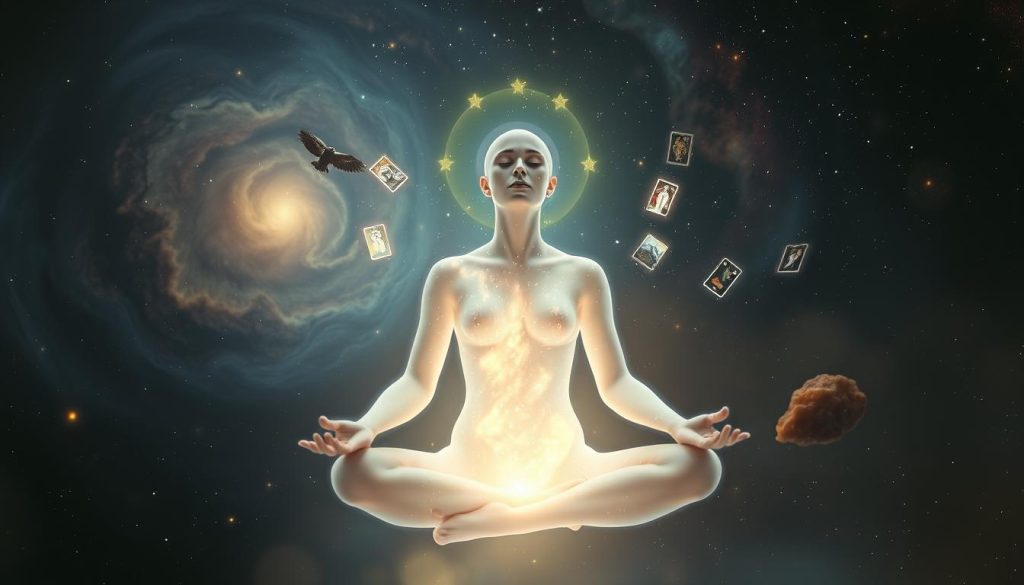
Astral Projection Meditation and Sound Support
Try a short, tidy meditation with soft sound and you may notice your awareness settle while the body eases.
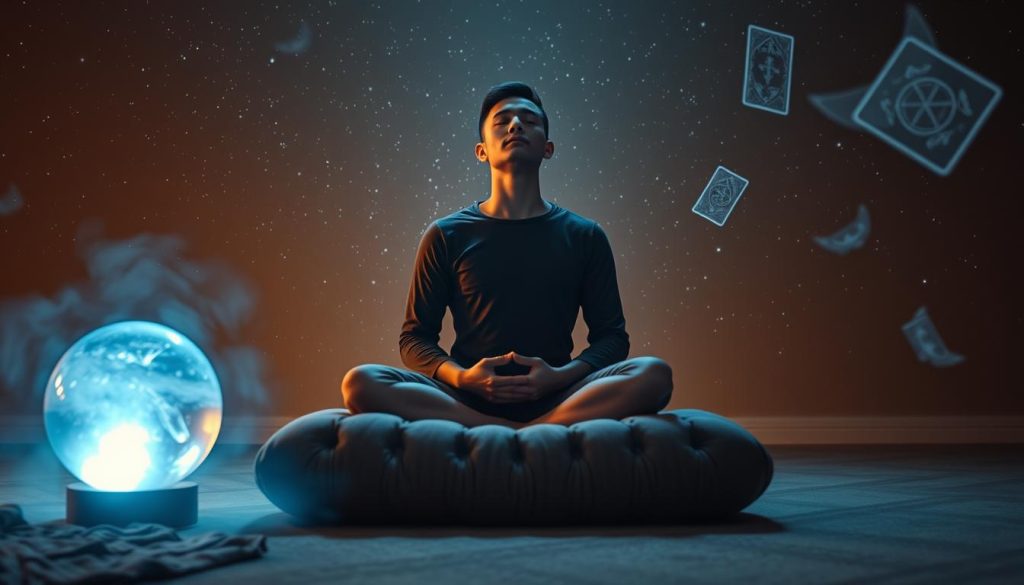
We use focused-awareness drills and third-eye visualizations. Picture a gentle glow at the brow. Step inward with calm intent and steady breath.
Guided tracks that layer progressive relaxation, energy activation, and separation cues can feel like a single flowing map. They guide the mind and support safe travel.
Sound helps. Try binaural beats: alpha (8–13 Hz) for relaxed wakefulness, theta (4–8 Hz) for hypnagogia, and delta (0.5–4 Hz) for deep rest.
Keep volume low and use comfy headphones. Time sessions when you are naturally drowsy but aware.
Blend meditation with our chosen technique—rope, roll-out, or float—and train awareness to expand and contract on cue. Log how your mind and body respond so you can match techniques and sound next time.
Less is often more. A short, clean session gives clearer feedback than a long, restless one. We welcome playful, steady practice and kind curiosity as we travel together.
What Does Astral Projection Feel Like?
The lead-up can feel like a gentle crescendo: subtle buzzing, a widening calm, and a sense of poised lift.
Many report whole-body vibrations—a humming or roaring under the skin that sits alongside brief paralysis or gentle pressure. Stay calm. That calm helps the moment shift into clarity.
Closed-eye lights and soft colors sometimes bloom. Sounds may seem distant or bright. Then separation can arrive: a light, unmistakable step outwards, as if your hand guides a softer self through air.
Movement often feels intuitive. You think of a corner of the room and you’re there. Some cross physical barriers with ease and notice sharper details than in most dreams.
Return is simple: focus on your body, and home comes quickly. Many feel a warm afterglow and deep relaxation after a short visit.
Try short forays at first. Log sensations, timing, and triggers. Over time your personal projection feel becomes a reliable signature you can trust.

Benefits and Uses: Growth, Healing, and Expanded Awareness
For many, these experiences act like a mirror—revealing old patterns and fresh views that help heal. Short sessions can ease deep anxiety and soften fear around death.
We often see vivid imagery that supports psychological breakthroughs. That imagery lets us process past events and renew purpose in daily life.
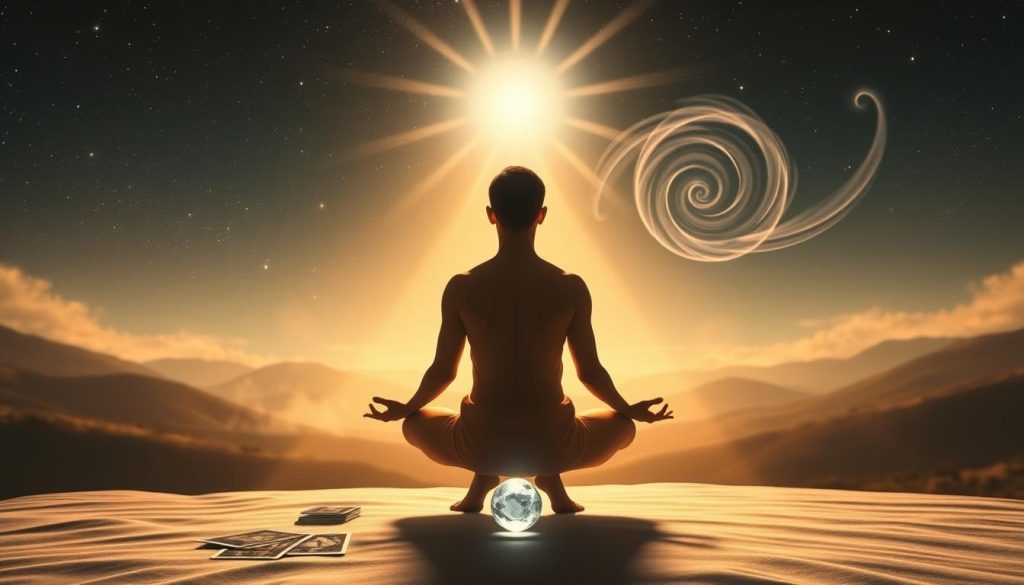
Practical gains follow: stronger intuition, clearer creative solutions, and a kinder inner voice. Consistent practice links subtle journeys with better sleep, calmer nerves, and improved health overall.
Use this work for small, focused aims: healing, creative problem-solving, or reconnecting with soul purpose. Pair each session with journaling so experiences turn into applied wisdom rather than fleeting memories.
Remember: benefits build slowly. Projection may deepen consciousness and brighten your world when approached with ethical intent, curiosity, and gentle pacing.
Safety, Grounding, and Practical “Rules” for the Journey
Good practice starts with grounding—small choices make big differences. We set clear intention and a tidy, comfortable space. No substances before a session. These rules protect health and steady awareness.
Start short. Brief sessions help build trust and gentle control. Time-bound practice keeps nervous systems calm and makes progress steady.
If unease appears, return by thinking of the physical body. That simple focus acts like a tether and brings you home fast. Remember: return is always available.
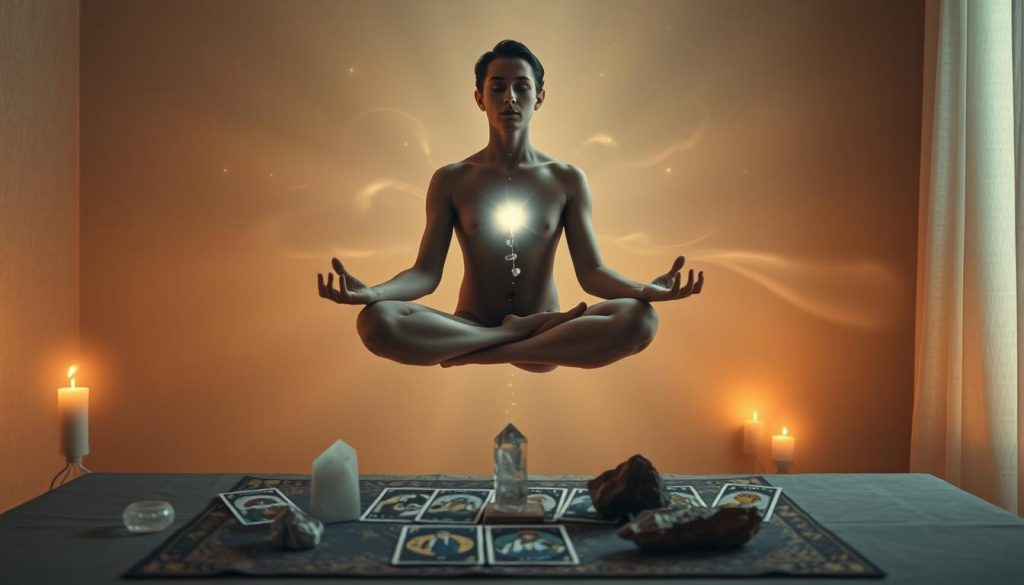
Afterward, ground with water, a light snack, and journaling. Write a short note about sensations and any body experience. This helps the mind settle and turns raw impressions into useful learning.
Be kind with emotions. Pause if fear rises and give time to regroup. Those with mental-health histories should consult a professional before regular projection practice.
We finish each session with a small ritual—calm breath, an affirmation, and gratitude. Good boundaries and practical steps make these experiences safer and more rewarding.
Bringing It All Together for Your Next Journey
Let’s fold the steps into one simple loop you can return to each night. Prepare your space, relax into hypnagogia, apply a chosen separation method, explore briefly, return by intention, and ground. Keep each step gentle and repeatable.
Pick one technique that felt right and try it for a week. Short, clear sessions stack into steady skill. Use soft sound or a short meditation if it helped you settle, but let tools serve your mind, not lead it.
Verify small details after each session and close with water, deep breaths, and a short journal note. We celebrate your curious heart. Visit www.mysticbolt.com for free sound helpers and playful supports as you continue this conscious travel and careful astral projection practice.
